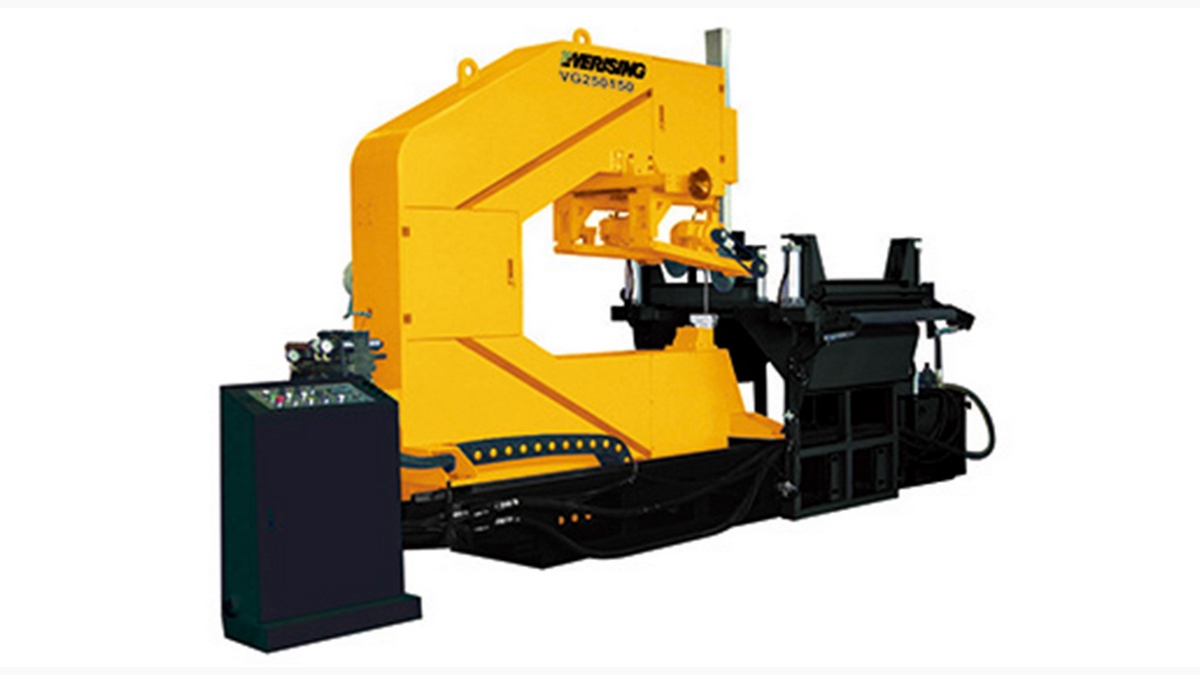Permanent magnets, also known as lodestones, can be made from natural products or artificially made. A material that can take on magnetism, retain the magnetism once magnetized, and withstand an external magnetic field without becoming demagnetized, can make a permanent magnet.
What is a Permanent Magnet?
A permanent magnet refers to a magnet that can retain its magnetic properties for a long time. An example of a natural material that can form a permanent magnet is magnetite. Artificial materials such as AlNiCo alloy can also be used to form permanent magnets. Unlike electromagnets, permanent magnets do not need to be energized by an external magnetic field to be magnetic. Permanent magnets retain residual magnetization after the external magnetic field is removed.
The magnitude of the reverse magnetic field required to completely demagnetize a ferromagnetic substance is called the coercive force of the ferromagnetic substance. Both steel and iron are ferromagnetic, but their coercivity is different. Steel has a larger coercivity, while iron has a smaller coercivity. The addition of carbon, tungsten, chromium, and other elements causes the steel to have varying magnetic properties at room temperatures. The crystal structure, internal stress, and magnetic strength may vary. These variations are called inhomogeneities, and can be selected to increases the materials magnetic force. Generally, the greater the degree of inhomogeneities, the greater the magnetic strength.
To achieve the best state of inhomogeneity of the steel, proper heat treatment or machining must be carried out. For example, when carbon steel is in the molten state, its magnetic properties are like that of ordinary iron. However, after it is quenched at high temperature, the unevenness increases rapidly, and the material acquires the potential to become a stronger permanent magnet. If the steel is slowly cooled from a high temperature, or the quenched steel is melted at six or seven hundred degrees Celsius, the internal atoms have sufficient time to arrange into a stable structure, and various inhomogeneities are reduced. So, coercive force is then reduced, and it is no longer a permanent magnet material.
Steel or other materials can be made into strong permanent magnets if they are properly treated and processed to have the best internal inhomogeneity and maximum coercivity. The crystal structure of iron, its internal stress and other inhomogeneities are small, and the coercive force is naturally small, so it does not require a strong magnetic field to magnetize or demagnetize it, so it cannot become a permanent magnet. Generally, materials that are easy to magnetize and demagnetize are called soft magnetic materials. Most of the materials used as magnetic conductors and electromagnets are soft magnets. The polarity of permanent magnets does not change, whereas the polarity of soft magnets changes with the polarity of the applied magnetic field.
What is a Temporary Magnet?
Temporary magnets are special types of magnets that can change their magnetic properties with changes in external conditions. This means that the magnetic properties of the temporary magnet will not remain the same regardless of external conditions. Another name for temporary magnets is soft magnets or electromagnets.
The magnetic domains of temporary magnets are not permanently aligned with external magnetic fields, and they easily return to their original state. The magnetization and demagnetization of magnetic materials requires an external magnetic field. Electrical energy can create the electromagnetic domains necessary for the magnetization of soft magnet material. The poles of an electromagnet can easily be reversed or changed. When the applied magnetic field disappears, the electromagnetic behavior disappears immediately.
Soft magnets are usually made of a mixture of soft and malleable materials such as soft iron, giving the magnets special and unique properties. Temporary magnets have short-range magnetic fields. Soft iron plays a central role in transformers and is used in powerful magnetic tools, such as in MRIs along with permanent magnets.
What is the Difference Between Permanent Magnets and Temporary Magnets?
- A permanent magnet is a type of magnet that does not require an external magnetic field to remain fully magnetized, while a temporary magnet is a type of magnet that requires an external magnetic field to remain fully magnetized.
- The properties of a permanent magnet do not change, whereas a temporary magnet is a magnet whose magnetic properties are constantly changing. Permanent magnets are made of hard materials, while temporary magnets are made of soft materials.
- The magnetic poles of permanent magnets can never be reversed, while the magnetic properties of temporary magnets can be reversed.
- The magnetic field strength of a permanent magnet is constant, while the strength of a temporary magnet always changes with conditions.
- Permanent magnets don't need electricity to work like magnets, while temporary magnets always need electricity to work like magnets.
- Permanent magnets are called bar magnets, while temporary magnets are also called electromagnets.
- The magnetic field in the permanent magnet does not disappear with the disappearance of the external magnetic field, while the magnetic field in the temporary magnet disappears when the external magnetic field disappears.
- The magnetic domains of permanent magnets, once aligned, can never be easily reversed, while the magnetic domains of temporary magnets, once aligned, are easily reversed.
- In physics, permanent magnets are the type of magnets that are made of a hard permanent ferromagnetic material, while temporary magnets are the type of magnets that are made of some ferromagnetic temporary material.
Permanent Magnet Application:
Permanent magnets are widely used in various fields such as electronics, electrical, mechanical, transportation, medical and daily necessities. Permanent magnets can be found in speakers, telephone receivers, magnetic systems of magnetoelectric meters, generators, and magnetic poles in permanent magnet motors. Permanent magnet devices are used in machine manufacturing, magnetic suspension systems, magnetic bearings, magnetic separation systems, magnetic mineral separation, magnetic water purification systems, magnetic systems of proton accelerators, etc.
Permanent Magnet Material:
Strong permanent magnets can be formed by rare earth elements cerium, strontium, lanthanum, neodymium, etc., and cobalt. Their magnetic strength can reach 150 times that of carbon steel, 3 to 5 times that of AlNiCo permanent magnet materials, and 8 to 10 times that of permanent ferrite. Specialized magnets, like Rubber Magnets, can be made using bonded ferrite powder and synthetic rubber, extruded into molds, and processed into soft, elastic, twistable magnets.
What Are the Commonly Used Permanent Magnet Materials?
-
AlNiCo permanent magnet alloy:
AlNiCo is mainly composed of iron, nickel, and aluminum, but also contains copper, cobalt, titanium, and other elements. It has high remanence, a low-temperature coefficient, and high magnetic stability. It is available as either a casting alloy or a powder sintering alloy. It is often used in the manufacturing of magnetoelectric instruments, flow meters, micro motors, relays, etc.
-
Iron-chromium-cobalt permanent magnet alloy:
This alloy is mainly composed of iron, chromium, and cobalt, with small amounts of molybdenum, titanium and silicon added. Its processing performance is good, its magnetic properties are like that of AlNiCo permanent magnet alloys, and its magnetic properties can be improved by plastic deformation and heat treatment. It is used to manufacture various small magnet components with small cross-sections and complex shapes.
-
Permanent magnet ferrite:
These are mainly barium ferrite and strontium ferrite alloys, which have high resistivity, large coercivity, and can be effectively applied in magnetic circuits with large air gaps such as for the permanent magnets of small generators and motors. Permanent magnet ferrite does not contain precious metals like nickel, cobalt, etc., There are rich sources of raw material available, and their processing is simple and low cost. They can be used to replace AlNiCo permanent magnets in the manufacturing of magnetic separators, magnetic thrust bearings, speakers, microwave devices, etc. However, its maximum magnetic energy product is low, its temperature stability is poor, its texture is brittle and fragile, and it is not resistant to shock and vibration, so it is not suitable for measuring instruments and magnet devices with precise requirements.
-
Rare earth permanent magnet materials:
These are mainly rare earth cobalt permanent magnet materials and NdFeB permanent magnet materials. The former is an intermetallic compound formed by rare earth elements cerium, strontium, lanthanum, neodymium, etc., and cobalt. It is mainly used for magnetic systems of low-speed torque motors, starter motors, sensors, magnetic thrust bearings, etc. NdFeB permanent magnet material is the third generation of rare earth permanent magnet material. Its remanence, coercive force and maximum magnetic energy product are higher than the other permanent magnet materials. It is not fragile, it has good mechanical properties, and low density, so is preferable for use in lightweight magnetic components. It is good for items requiring miniaturization, but its high magnetic temperature coefficient limits its application.
-
Composite permanent magnet material:
These are composed of permanent magnetic material powder incorporated into a plastic material as a binder. Since a portion of the material is the binder, its magnetic properties are significantly lower than the corresponding magnetic material without binder. Composite permanent magnet material applications are limited by the heat resistance of the binder. Their operating temperature is low, generally not exceeding 150 ℃. However, composite permanent magnet material has high dimensional accuracy, good mechanical properties, good performance uniformity, and it is easy to perform radial orientation of the magnet due to multi-pole magnetization. It is mainly used in the manufacturing of electrical instruments, communication equipment, rotating machinery, magnetic therapy equipment, and sporting goods.







.png)






